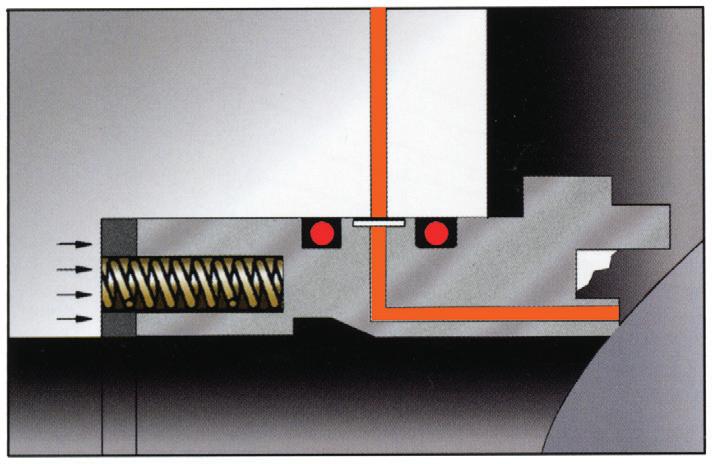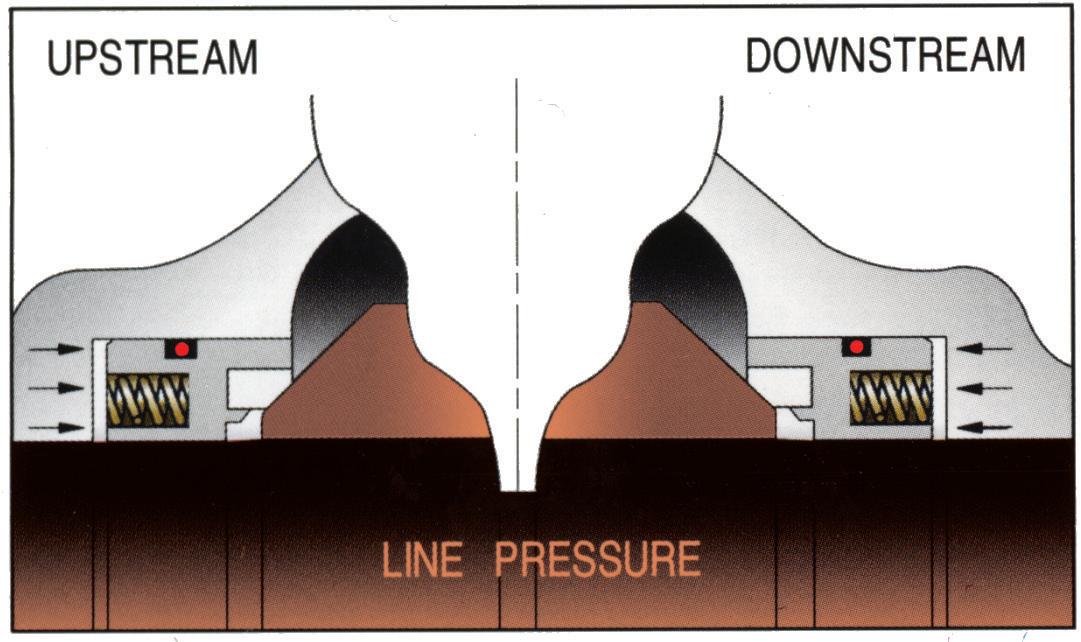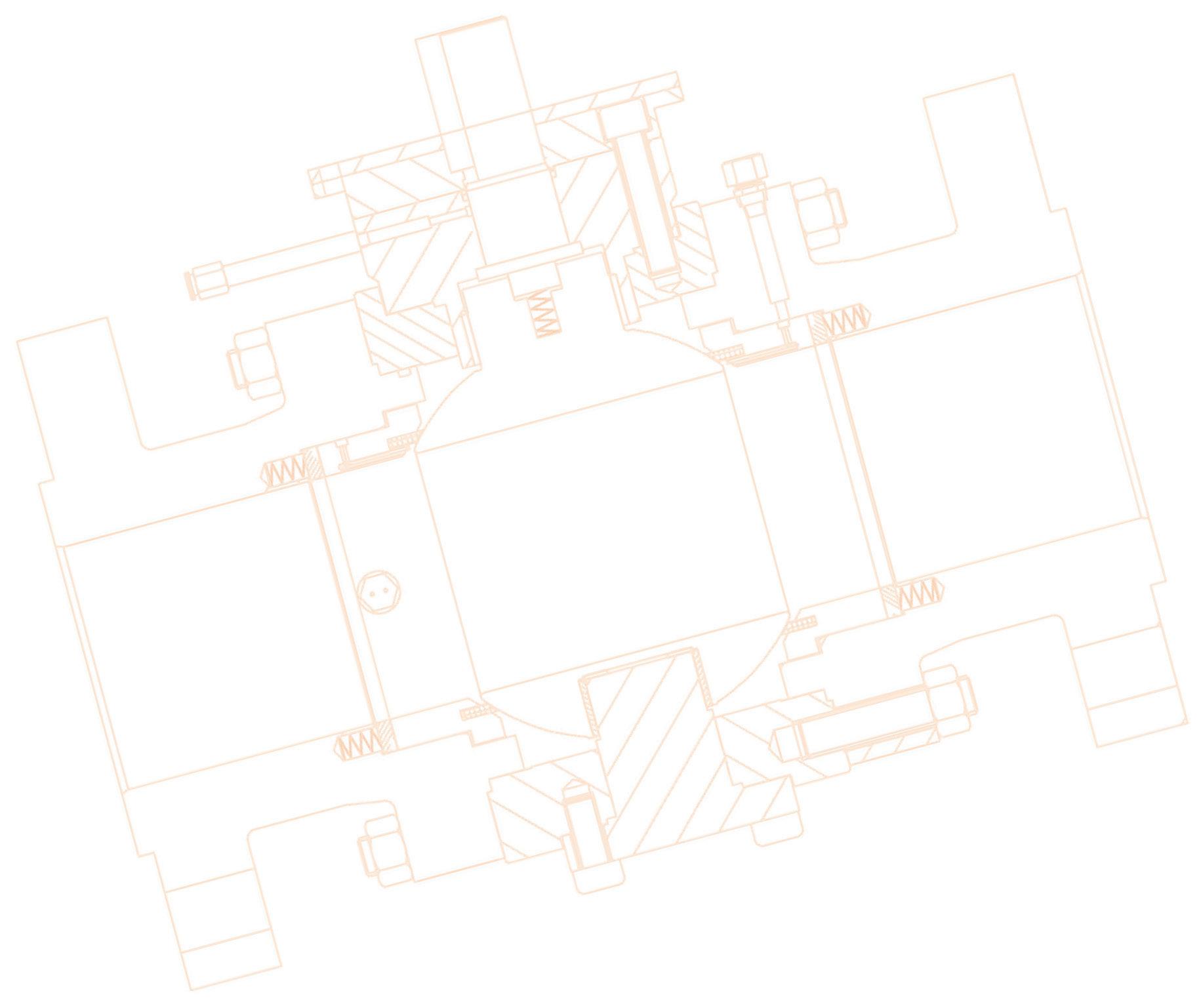
2 minute read
10.0 Overview Design Features
Piston-action seats
As line pressure increases the seat reacts to the force of the pressure to form an effective seal. In the absence of line pressure, coil springs behind the seat provide a tight seal by keeping the seat in contact with the ball surface. Independent floating spring loaded seats are always in contact with the ball to provide an effective tight seal even at low differential pressure. Independent upstream and downstream seats permit draining of fluid from the body cavity, so allowing double block and bleed operation (closed position only). With the optional single sealing feature, there is automatic body cavity release of over pressure to the line through the downstream seat.
Self relieving seats (standard)
In self relieving condition, excessive internal cavity pressure is automatically relieved both upstream and downstream into the line by excessive pressure forcing the seats away from the ball. Refer Appendix 4 page 28 for more information.
Self relieving seat design during cavity over pressurisation
Pressure
ENERGISE Pressure
Body Pressure
RESPONSE
First Seal Ball Ball
Second Seal
Double piston effect (DPE) seats
With the ‘DPE’ seat option, if a leakage occurs in the upstream seat, the pressure entering the body cavity pushes the downstream seat against the ball and the valve seals. Line pressure forces a seal against the floating seat.
An external body relief valve is installed to protect the body cavity from excess pressure which can be vented to atmosphere or recycled back to the downstream side of the valve or to flare.
Triple barrier stem seal design
Leakage from the stem area is prevented by double barrier sealing with O-rings as well as graphite fire seals. Leakage through the valve body joint is also protected by double sealing with an O-ring and a flexible graphite gasket. After a fire has deteriorated the -rings, graphite packing and secondary seal ensure prevention of external fluid leakage.


Piston-action seat are standard and provide bi-directional sealing
Pressure DPE seat design during cavity over pressurisation
ENERGISE Pressure
Body Pressure
RESPONSE
Ball Ball
First Seal Second Seal
Double block and bleed
Whether in the open or closed position, pressure on each side of the ball is blocked from the body cavity by the seat ring. The cavity can be blown down or drained (only in the closed position) through the body port to indicate line isolation is effective.
Emergency sealing function
In case of fluid leaks from the seat or stem sealing area, a sealant can be supplied through the injection fitting to temporarily prevent leakage.




